|
AMIDA NYORAI
Photo Tour Page

This is a side page.
Click here to return to TOP AMIDA PAGE
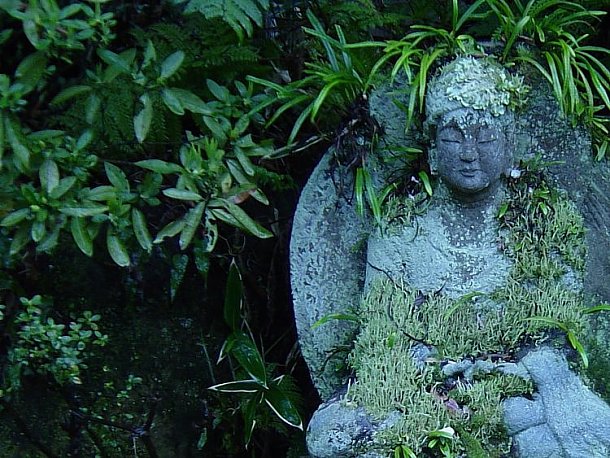
Amida, stone statue in private garden, Kamakura, Japan (1928). H = 70 cm. Early summer.
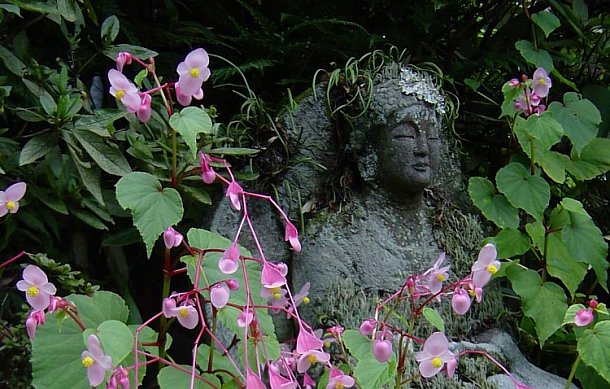
Amida, stone statue in private garden, Kamakura, Japan (1928). H = 70 cm.
Same stone statue as prior photo, but taken in late autumn.
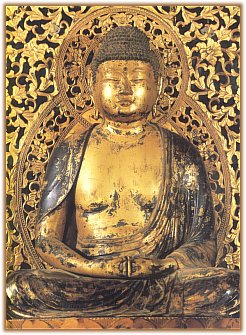
Amida Nyorai, Wood, H = 62 cm, 12th Century
Treasure of Chūsonji Temple 中尊寺 (Iwate Preferture)
Photo Courtesy of magazine 日本の美をめぐる, No. 35, Published by Shogakugan 2002.
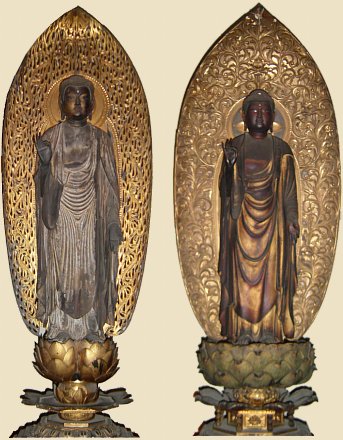
Amida Nyorai
Two Statues from the Kamakura Era, Private Collection
Photos taken 2003 at the Tsurugaoka Hachimangu Museum, Kamakura
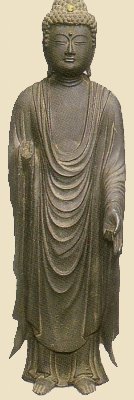 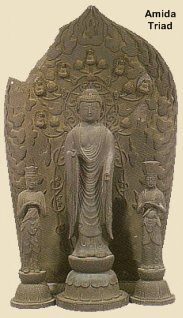
(Left) Bronze, Kamakura period, ICP of Ichihara City 市原市 (Chiba)
Originally housed at now-defunct Mankōin Temple 満光院.
Photo from Kanagawa Prefectural Kanazawa Bunko Museum 神奈川県立金沢文庫
(Right) Amida Triad 阿弥陀三尊, Treasure of Ryūgeji Temple 龍華寺 (Yokohama)
Made in the style of the Amida Triad at Zenkōji Temple 善光寺 in Nagano prefecture.
Photo from Kanagawa Prefectural Kanazawa Bunko Museum 神奈川県立金沢文庫.
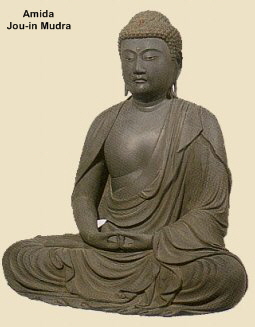 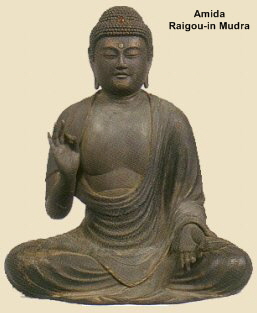
(Left) Amida with hands forming Jō-in 定印 (meditation) mudra. Hōjōji Temple 北条寺 (Shizuoka).
Early Kamakura period. Said to resemble the work of famed sculptor Unkei. Photo from
Kanagawa Prefectural Kanazawa Bunko Museum 神奈川県立金沢文庫.
(Right) Amida with hands forming the Raigō-in Mudra 来迎印. Attributed to Kei-school artists.
Now housed at the Kanagawa Prefectural Kanazawa Bunko Museum 神奈川県立金沢文庫.
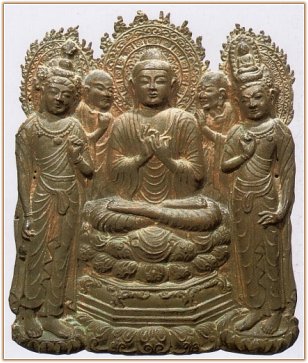
Amida Nyorai
Late 7th century AD, Hōryūji Temple 法隆寺 (Nara)
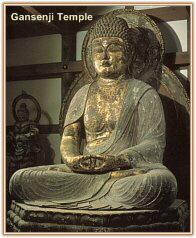 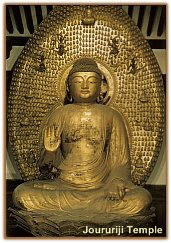
(Left) Amida Nyorai, 10th Century AD, Gansenji Temple 岩船寺 (Kyoto)
10th Century (946 AD), Wood, H = 284 cm, ICP. Made using the shippaku 漆箔 method,
in which gold foil is affixed to the lacquered surface of the wood statue.
(Right) Amida Nyorai, Jōruriji Temple 浄瑠璃寺 (Kyoto)
Early 12th Century (1107 AD). Wood, H = 224.2 cm. The central statue among
a set of nine (see photo below). Made using the shippaku 漆箔 method.
Photos courtesy magazine 日本の美をめぐる, No. 45, Published by Shogakugan 2003.
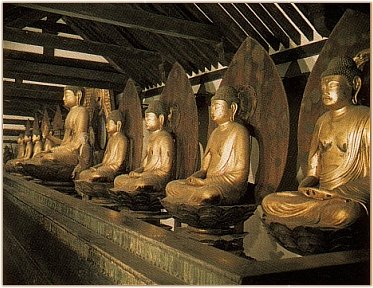
Kutai Amida Butsu 九体阿弥陀仏 (Lit. = Nine Bodies of Amida)
Jōruriji Temple 浄瑠璃寺 (Kyoto), Early 12th Century, Wood, H = 224.3 cm (central image)
Other statues range in height from 138.8 cm to 145.5 cm. All employ the Shippaku 漆箔
method. Nine refers to the nine different levels or grades of Amida's Pure Land; devotees
are reborn into one of the nine. See Nine Levels of Rebirth for more details.
Photos courtesy magazine 日本の美をめぐる, No. 45, Published by Shogakugan 2003.
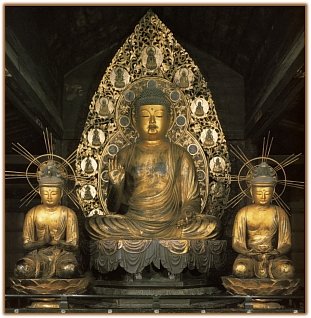
Amida Nyorai Triad (Sanzon)
Sanzen-in 三千院 (Kyoto). 12th Century (1148 AD). Wood.
H = 233 cm (central image). Shippaku 漆箔 method of affixing gold to the lacquered statues.
Photo courtesy magazine 日本の美をめぐる, No. 45, Published by Shogakugan 2003.
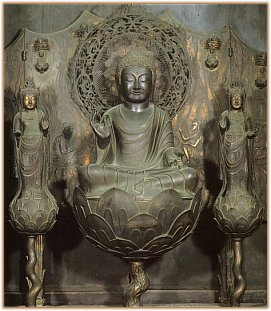
Bronze, Amida Sanzon Triad 阿弥陀三尊
8th Century AD, H = 33.3 cm (central statue)
Hōryūji Temple 法隆寺 (Nara)
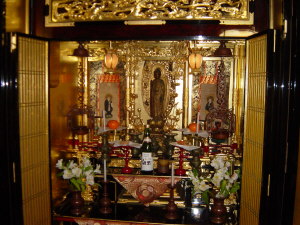
Home altar to Amida at Daimon Sake Brewery in Osaka
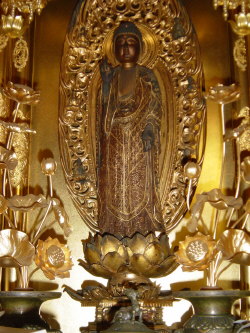
Closeup of Amida at Daimon Sake Brewery in Osaka
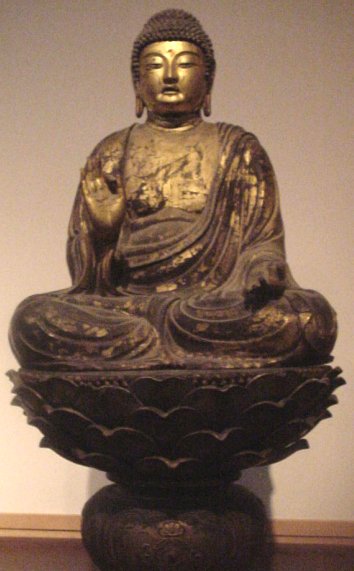
Amida Nyorai, Late Nara, Early Heian
Treasure of Saidai-ji, now housed at the
Tsurugaoka Hachimangu Museum in Kamakura
where I took this photo at a recent exhibition
|

|

|
|
Amida Nyorai by JOCHO
at Hoodo Byodoin, c. 1053
Cypress wood, H = 9 ft. 2 in
|
Amida Nyorai
Hase Dera Temple
Wood, Kamakura Era
|
|
THIS IS A SIDE PAGE
Return to Main Amida Nyorai Page |